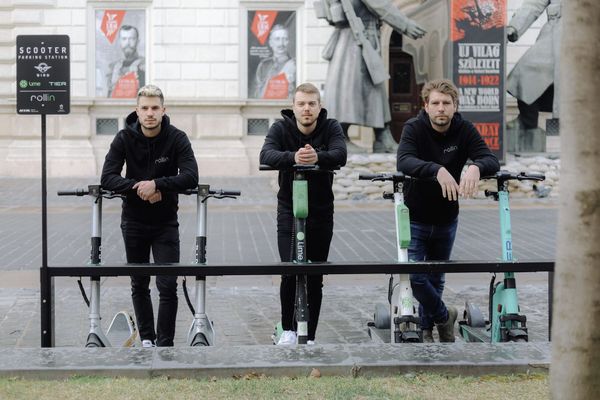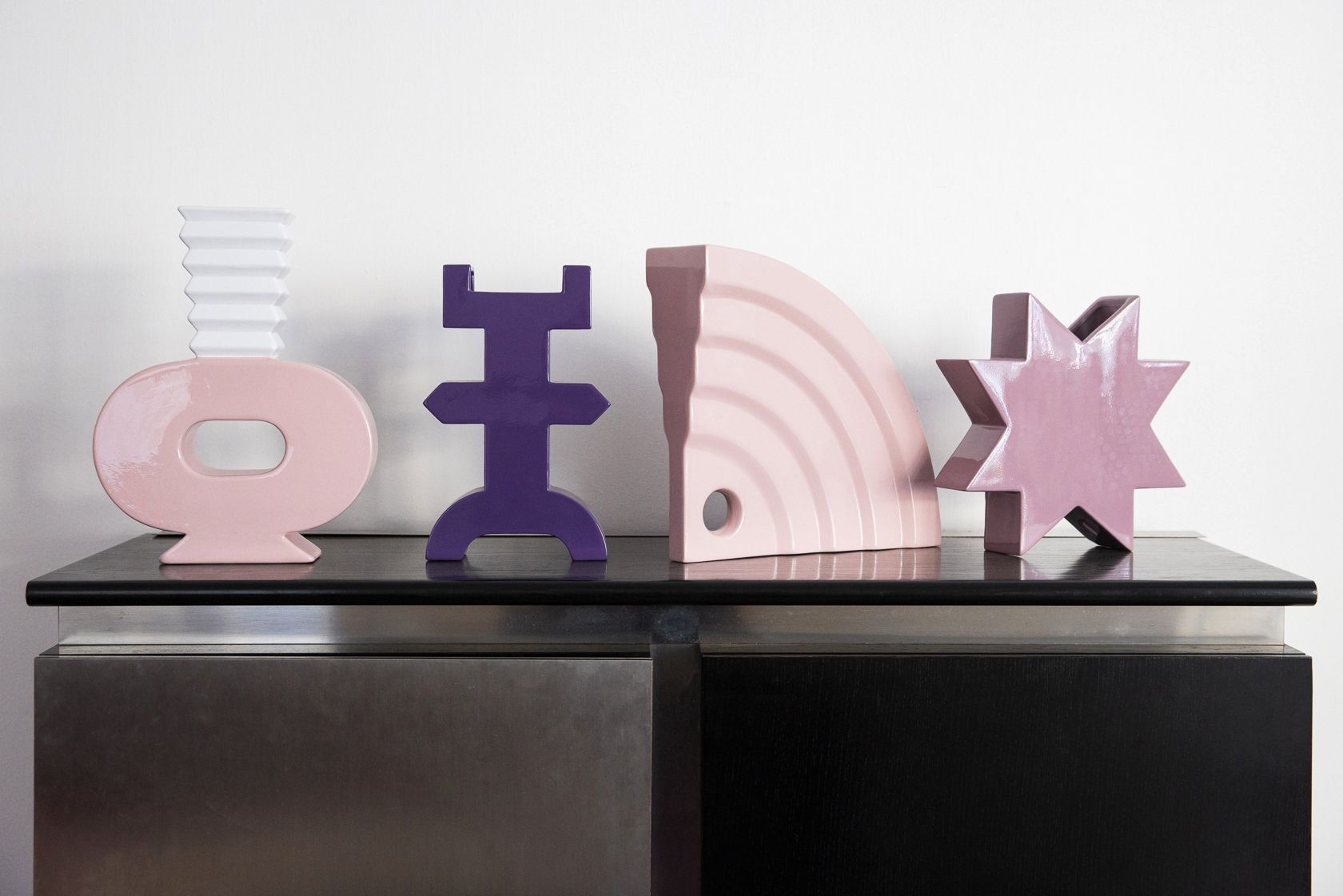It all started with a dino on the invitation—the Memphis debut exhibition in 1981 was a major game-changer in design trends. The unconventional invitation was designed by Luciano Florio Paccagnella, who, perhaps didn’t even think at the time that he would still be working under the influence of Memphis in the 1990s, and in a completely different genre—in ceramics. Which, on top of all, was made in Hungary. We asked Tibor Nagy, the owner of Artibus365, about the history of extreme vases.
We visited Artibus365 with interior designers Kati Vörös and Péter Laza during a previous Artist Duo article photoshoot. While we were looking for the best interior details, our eyes were repeatedly caught by the vases made of colorful geometric shapes scattered around the store. As a regular guest at the pop-up place, Kati briefly told us about the unusual objects created by Luciano Florio Paccagnella, the Milan-based designer who is now in his seventies. The figurative, colorful vases reminded me of iconic Italian postmodern objects, as it turned out, for a reason. Luciano Florio Paccagnella had links to the Italian Memphis group. Eventually, we were introduced to the history of the vases by Tibor Nagy, head of Artibus365.
According to Tibor Nagy, Italian artist Luciano Florio Paccagnella is often referred to as the forgotten hero of Memphis. The Memphis group in Italy was formed in the early 1980s and represented a strong opposition to modern design. For them, the functionalism of modern design felt cold and semantically mute, something they wanted to counteract. Postmodern designers wanted to give meaning to objects, placing importance on figurativity, the associative nature of colors and objects, a connection with the past, and, last but not least, marketability. These popular products, bordering on kitsch and elegance, are a bright spot in design history. Memphis was led by Ettore Sottsass, who adapted perfectly to many styles like a chameleon. Their first exhibition opened on 18 September 1981, when they made a debut and immediately caused an international sensation with their bold use of form and color. Some sources omit, while others include Luciano Florio Paccagnella among the founding members, to whom the Memphis group owes its first exhibition invitation. Which can hardly be described as modest or conventional, since a red-eyed dinosaur flashes its razor-sharp teeth on the invitation.

Florio Paccagnella studied commercial graphics in Milan and soon after graduating in 1974, he worked for agencies and created advertising material for the Italian fashion brand, Fiorucci. He was introduced to Ettore Sottsass by architect Matteo Thun, who will have a great influence on the young designer, but more on that later. After the Memphis exhibition, graphic design continues to dominate his work; he designs and creates signboards and makes spray paint his trademark. He later tries his hand at TV set design, and his Instagram page features paintings.
But how did ceramics come into all this?
According to Tibor Nagy, Luciano Florio Paccagnella admired Ettore Sottsass, whose Yantra vase collection had an elementary influence on Florio Paccagnella, so in the nineties, he designed totem vases similar to Sottsass’ works, and also new shapes, and in the nineties, he founded a small manufacturer in Hungary together with an Italian trader and one from Szabadka, Zoltán Mester. Hungarian ceramists crafted his vases in Budapest based on his drawings, which eventually resulted in thousands of pieces. According to Tibor, only 100-150 of these are still available, as the pieces have sold out over the years and rarely return to the art market.

“In the last thirteen years, since I’m in the business, we’ve sold the vases to some exciting places. One Christmas, for example, we sent one to the creative director of Moschino in Los Angeles, but we’ve also had fashion designers, who have worked for Rihanna and the royal family, among our customers,” says Tibor.
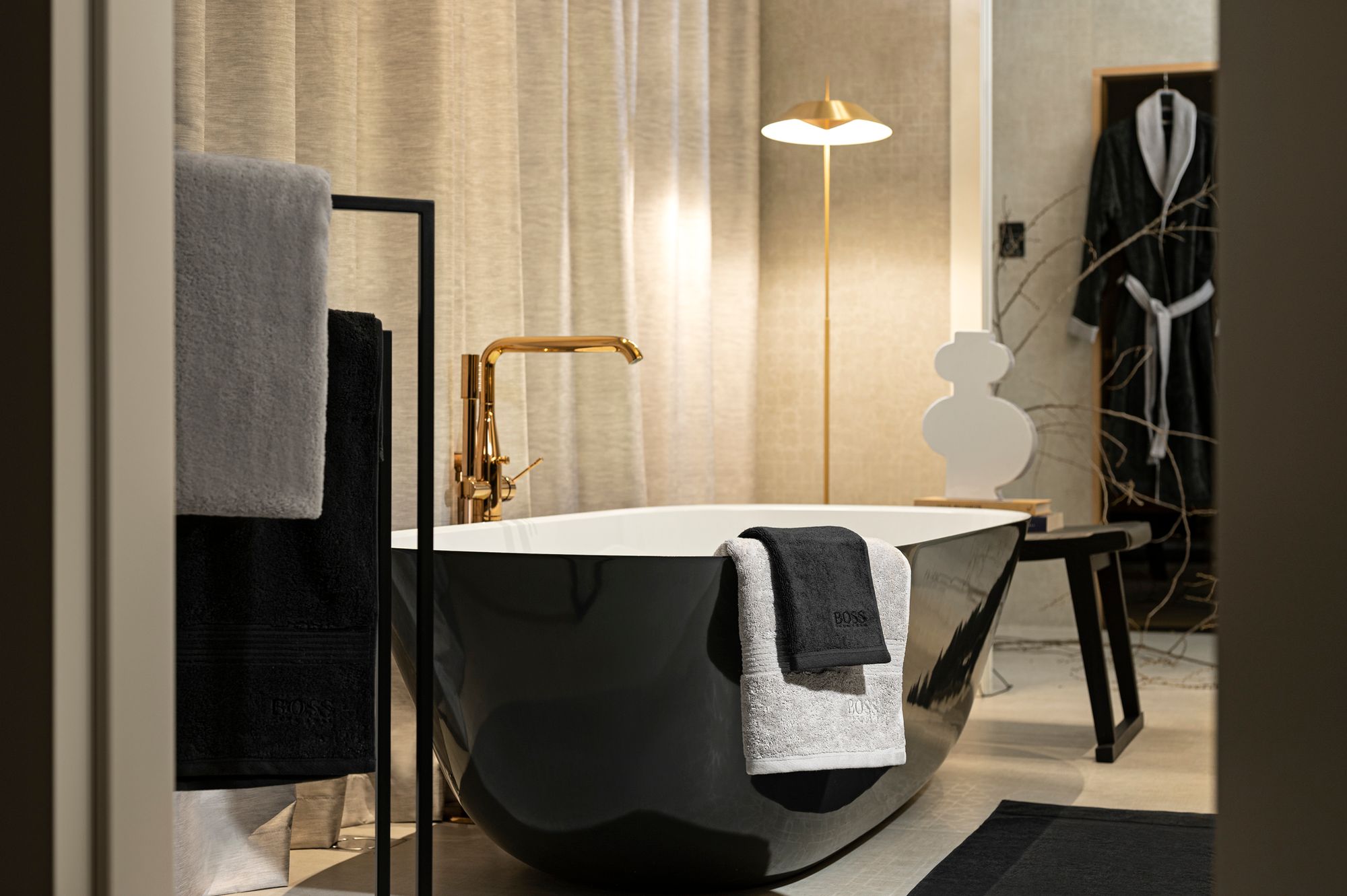
One of the reasons for this might be that the objects in Luciano Florio Paccagnella’s oeuvre, apparently unusual at first glance, fit in very well with a popular interior design trend of recent years, which we could even call the Memphis Renaissance. Aside from the group celebrating its 40th-anniversary last year, Memphis’ resurgence in popularity may have something to do with the current visual trends in social media and the eighties nostalgia that is now sweeping through everything from pop music to fashion.
Luciano Florio Paccagnella’s ceramics are available at Artibus365.
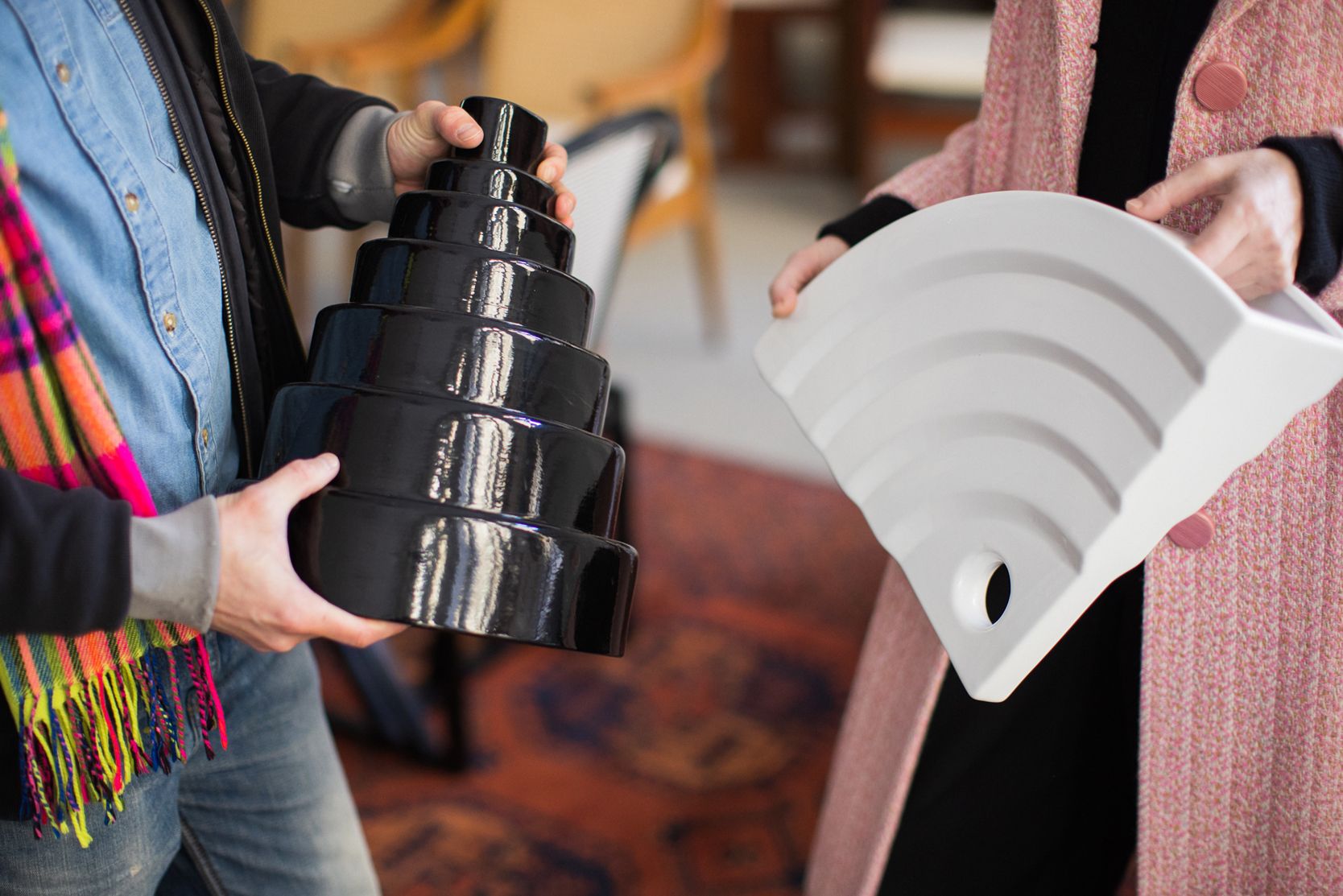

Artibus365: 1054, Budapest, Hold Street 6
Artibus365 | Web | Facebook | Instagram
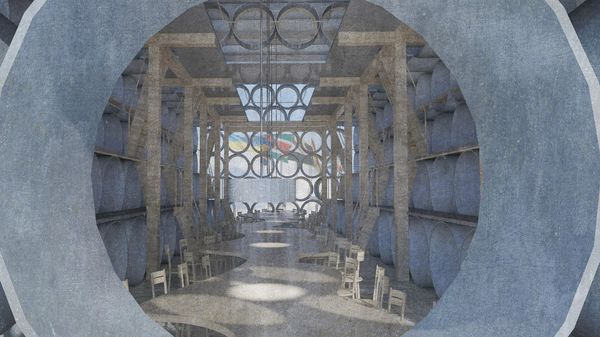
What to do with the decommissioned Nord Stream 2 gas pipeline? A German architecture studio has found the answer.
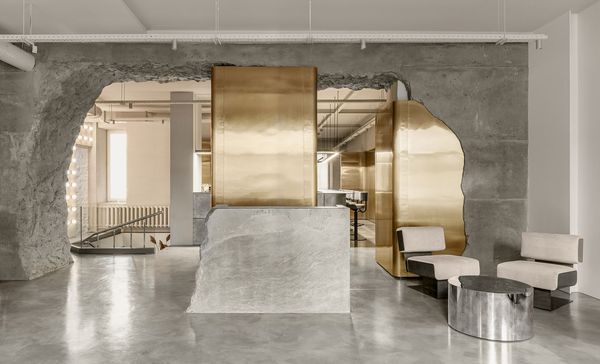
Ukrainian spots from our bucket list
